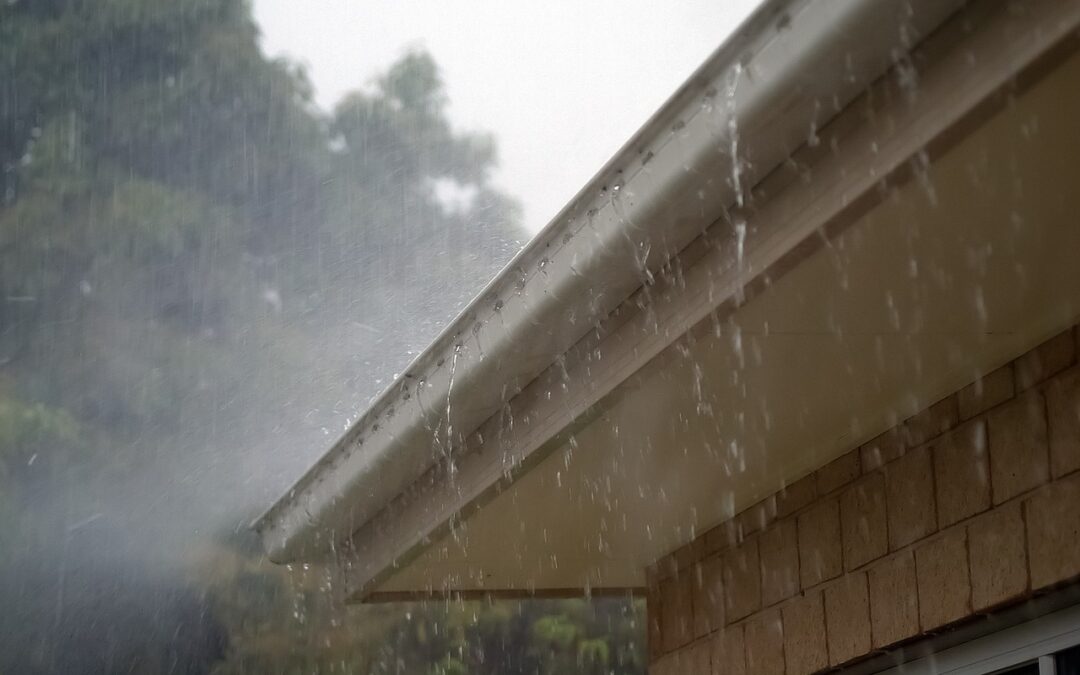How Does the Arizona Weather Affect Roof Longevity?
Arizona’s weather is as distinctive as its landscape, marked by scorching summers, monsoon storms, and relatively mild winters. While the state’s climate draws many to its desert beauty, it also presents unique challenges for homeowners, particularly when it comes to roof longevity. Understanding how Arizona’s weather affects your roof is crucial for maintaining its durability and avoiding costly repairs. This article explores the impact of Arizona’s extreme climate on roofing materials and offers insights into extending your roof’s lifespan.

The Impact of Extreme Heat on Roofs
Arizona is known for its intense heat, with summer temperatures frequently exceeding 100°F. This relentless heat has a significant impact on roofing materials, causing them to age more quickly than they would in milder climates.
Asphalt shingles, one of the most common roofing materials, are particularly vulnerable to heat. Prolonged exposure to high temperatures can cause shingles to become brittle, leading to cracking, curling, and loss of granules. These issues not only affect the appearance of the roof but also compromise its ability to protect your home from the elements.
Clay tiles, another popular roofing material in Arizona, are more heat-resistant but are not immune to the effects of extreme temperatures. Over time, the constant expansion and contraction caused by daily temperature fluctuations can lead to cracks in the tiles. Once a tile cracks, it becomes more susceptible to water infiltration, which can further damage the roof and underlying structure.
Metal roofs, while durable and reflective, can also be affected by Arizona’s heat. The intense sun can cause metal roofs to expand, leading to warping or loosening of fasteners. If not properly maintained, these issues can result in leaks or other structural problems.

The Role of Monsoon Season in Roof Wear and Tear
Monsoon season, which typically occurs from June through September, brings a mix of heavy rains, high winds, and dust storms that can take a toll on any roof. The sudden and intense nature of these storms can exacerbate existing weaknesses in your roofing materials, leading to rapid deterioration.
One of the most significant risks during monsoon season is wind damage. High winds can lift shingles, tiles, or metal panels, exposing the underlayment and leaving your roof vulnerable to water infiltration. Once water penetrates the roof, it can cause leaks, mold growth, and even structural damage if not addressed promptly.
The heavy rains associated with monsoons also pose a threat to roof longevity. Poor drainage or clogged gutters can cause water to pool on your roof, especially on flat roofs. This standing water can lead to leaks, especially if your roof’s protective coatings or sealants have deteriorated due to the heat.
Dust storms, or haboobs, are another weather phenomenon that can affect your roof. The high winds during these storms can carry abrasive dust particles that wear down roofing materials over time. Additionally, dust can accumulate in gutters and downspouts, leading to blockages that prevent proper drainage during heavy rains.
Winter Weather: Mild but Potentially Harmful
While Arizona winters are generally mild compared to other parts of the country, they still present some challenges for roof longevity. The most significant concern is the potential for thermal shock, a phenomenon where rapid temperature changes cause roofing materials to expand and contract quickly. This can lead to cracking, particularly in materials like asphalt shingles and clay tiles.
In some areas of Arizona, nighttime temperatures can drop significantly, leading to frost formation on roofs. While frost itself is not usually a problem, the repeated freezing and thawing cycles can weaken roofing materials over time, leading to cracks and other forms of damage.
Additionally, while snowfall is rare in most parts of Arizona, higher elevations like Flagstaff and the White Mountains do experience snow and ice. In these regions, the weight of accumulated snow and ice can strain the roof structure, particularly if the roof was not designed to handle such loads. Ice dams, which occur when melting snow refreezes at the roof’s edge, can also cause water to back up under shingles, leading to leaks and water damage.

Strategies for Extending Roof Longevity in Arizona
Given the challenges posed by Arizona’s weather, it’s essential to take proactive steps to protect your roof and extend its lifespan. Here are some strategies that can help:
- Choose Weather-Resistant Materials: When selecting roofing materials, consider those that are best suited for Arizona’s climate. For example, clay tiles and metal roofs are more heat-resistant and durable in extreme conditions compared to asphalt shingles. Reflective coatings or materials can also help reduce heat absorption, keeping your roof cooler and reducing wear.
- Regular Inspections and Maintenance: Conducting regular roof inspections, especially before and after monsoon season, is crucial for identifying and addressing potential issues early. Look for signs of damage such as cracked or missing shingles, loose tiles, or worn-out sealants. Regular maintenance, such as cleaning gutters and downspouts, trimming overhanging branches, and reapplying protective coatings, can prevent small problems from becoming major repairs.
- Proper Ventilation and Insulation: Ensuring your roof is properly ventilated and insulated can help reduce the impact of Arizona’s extreme temperatures. Adequate ventilation allows heat to escape from the attic, reducing the temperature differential between the roof and the outside air. This minimizes the expansion and contraction of roofing materials, reducing the risk of cracking. Proper insulation also helps maintain a stable temperature inside your home, reducing the strain on your roof.
- Address Damage Promptly: If you notice any signs of damage, such as leaks, water stains, or loose roofing materials, it’s important to address them promptly. Delaying repairs can lead to more extensive damage, increasing the cost and complexity of repairs. In some cases, it may be more cost-effective to replace the roof rather than repeatedly patching damaged areas.
- Consider Professional Maintenance Programs: Many roofing companies in Arizona offer maintenance programs that include regular inspections, cleaning, and minor repairs. Enrolling in one of these programs can provide peace of mind, knowing that your roof is being professionally maintained and that potential issues are being addressed before they become serious problems.
- Install Protective Coatings: For flat roofs or roofs with foam coatings, applying an elastomeric or reflective coating can provide an extra layer of protection against UV rays, heat, and water. These coatings not only extend the life of your roof but can also improve energy efficiency by reflecting sunlight and reducing cooling costs.
- Prepare for Monsoon Season: Before monsoon season begins, take steps to prepare your roof for the heavy rains and high winds. Clean your gutters and downspouts, trim overhanging branches, and inspect your roof for any signs of wear or damage. Consider installing wind-resistant shingles or tiles, which are designed to withstand higher wind speeds and reduce the risk of damage during storms.
- Stay Informed About Weather Conditions: Keeping an eye on the weather forecast, especially during monsoon season, can help you take proactive steps to protect your roof. If severe weather is expected, ensure that your roof is in good condition and that any loose objects or debris are secured to prevent them from causing damage during a storm.
Arizona’s weather presents unique challenges for maintaining roof longevity. The extreme heat, monsoon storms, and occasional cold snaps all contribute to the wear and tear on your roof. However, by understanding how these factors affect your roof and taking proactive measures, you can significantly extend its lifespan and protect your home from the elements. Regular inspections, choosing weather-resistant materials, proper maintenance, and prompt repairs are key to ensuring your roof remains in excellent condition for years to come. With the right approach, you can enjoy the beauty of Arizona without worrying about the durability of your roof.


Recent Comments